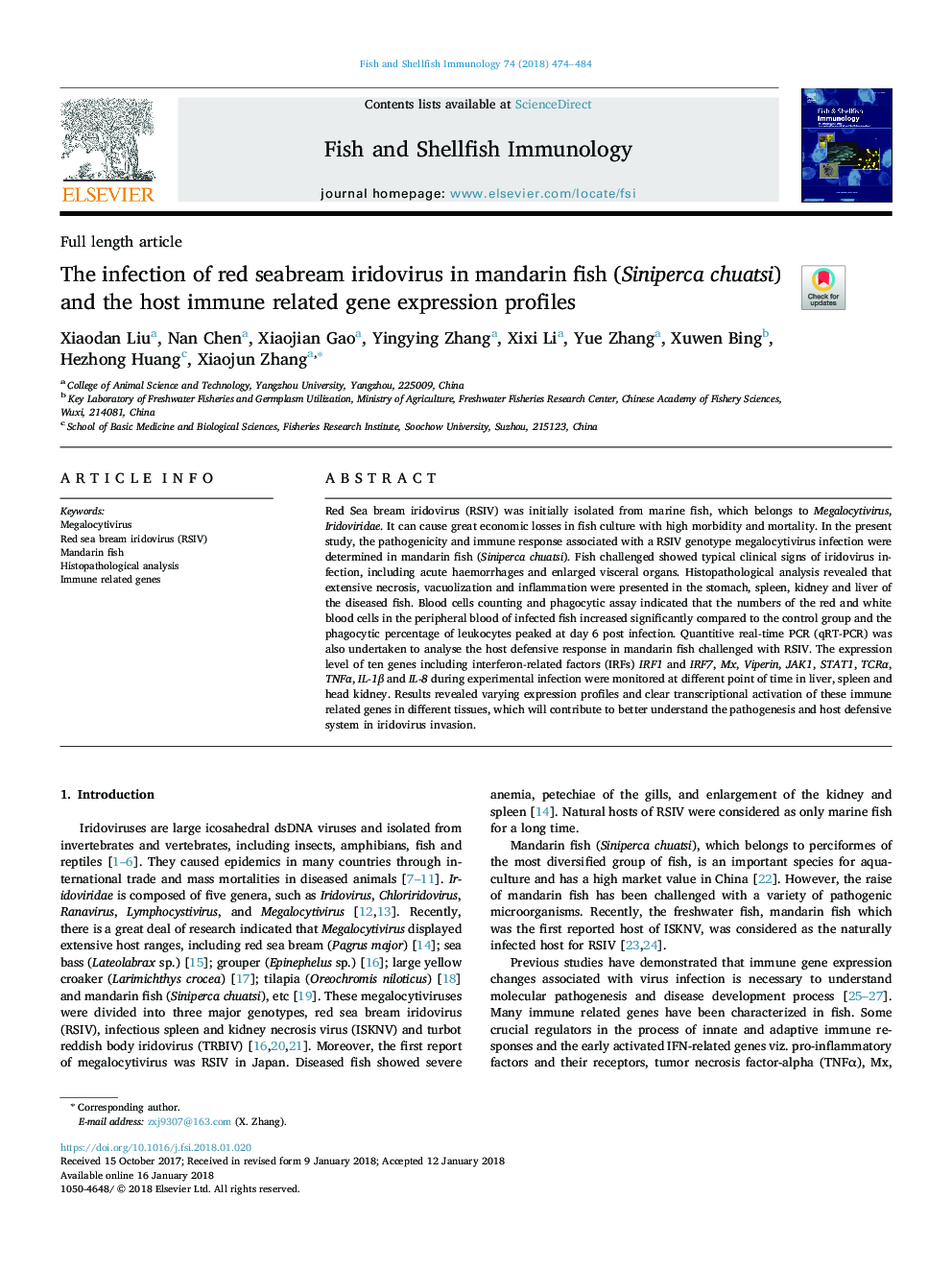| Article ID | Journal | Published Year | Pages | File Type |
|---|---|---|---|---|
| 8498713 | Fish & Shellfish Immunology | 2018 | 11 Pages |
Abstract
Red Sea bream iridovirus (RSIV) was initially isolated from marine fish, which belongs to Megalocytivirus, Iridoviridae. It can cause great economic losses in fish culture with high morbidity and mortality. In the present study, the pathogenicity and immune response associated with a RSIV genotype megalocytivirus infection were determined in mandarin fish (Siniperca chuatsi). Fish challenged showed typical clinical signs of iridovirus infection, including acute haemorrhages and enlarged visceral organs. Histopathological analysis revealed that extensive necrosis, vacuolization and inflammation were presented in the stomach, spleen, kidney and liver of the diseased fish. Blood cells counting and phagocytic assay indicated that the numbers of the red and white blood cells in the peripheral blood of infected fish increased significantly compared to the control group and the phagocytic percentage of leukocytes peaked at day 6 post infection. Quantitive real-time PCR (qRT-PCR) was also undertaken to analyse the host defensive response in mandarin fish challenged with RSIV. The expression level of ten genes including interferon-related factors (IRFs) IRF1 and IRF7, Mx, Viperin, JAK1, STAT1, TCRα, TNFα, IL-1β and IL-8 during experimental infection were monitored at different point of time in liver, spleen and head kidney. Results revealed varying expression profiles and clear transcriptional activation of these immune related genes in different tissues, which will contribute to better understand the pathogenesis and host defensive system in iridovirus invasion.
Related Topics
Life Sciences
Agricultural and Biological Sciences
Aquatic Science
Authors
Xiaodan Liu, Nan Chen, Xiaojian Gao, Yingying Zhang, Xixi Li, Yue Zhang, Xuwen Bing, Hezhong Huang, Xiaojun Zhang,
